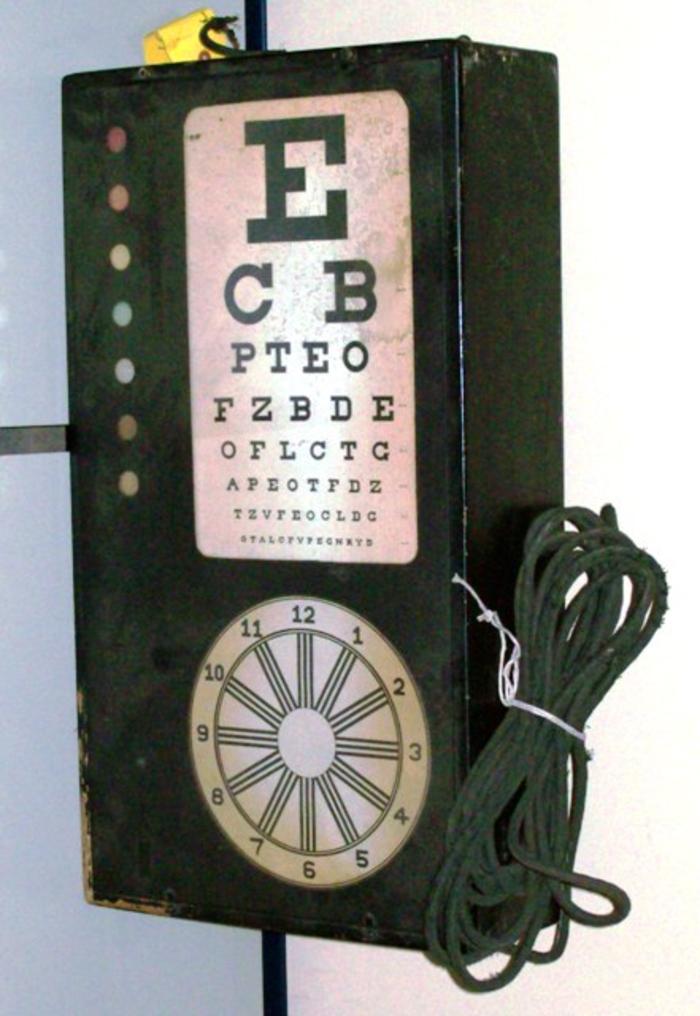Comments and Tags
This Snellen eye chart was manufactured by the British optical-equipment manufacturing company, Archer-Elliott Ltd. These charts, first invented by Dutch ophthalmologist Herman Snellen in 1862, are used by optometrists and ophthalmologists to measure visual activity. Patients are tested by covering one eye and reading each line of the chart until they can no longer identify the individual letters. Their vision is then scored on a scale between 20/20 and 20/40 (with 20/20 being the best) based on how many lines they are able to read. This model was likely manufactured between 1940–1949. The fields of optometry and ophthalmology experienced growth in the late 1940s and early 1950s. The purpose of a self-illuminated eye chart is to control the amount of light hitting the chart and reduce any glare that may impact the results of the test. Black metal box with light-up eye chart that can be mounted to the wall; attached power cord.Noelle Haviland, 3/8/2023
Medical ➔ Visual Acuity Chart
Identifier:
168603Description:
This light-up Snellen visual acuity chart is housed in a wooden box with five lightbulbs inside. Developed by Dutch ophthalmologist Herman Snellen in 1862, these eye charts are used by optometrists and ophthalmologists to measure visual acuity by having patients stand 20 feet away from the chart (or less if a mirror is used) and cover one eye at a time while reading the smallest line of letters they can identify. Depending on which line they can read, the patient's vision is then determined to be between 20/200 and 20/10, with 20/20 being considered 'normal' visual acuity.This particular chart was likely created around the 1940s and may have been manufactured by the Green Test Cabinet Company of St. Louis, Missouri. The illuminated chart has hooks that allow it to be hung on a wall as well as a cord to plug it in.
